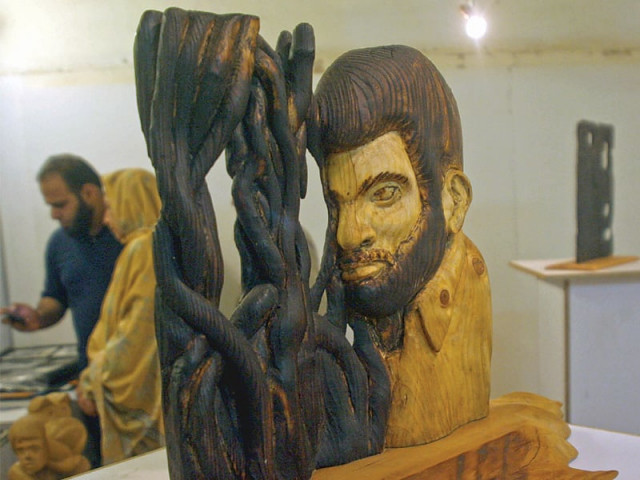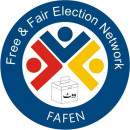With keyboards and lenticular prints, KU students turn the world on its head
The theses of graduates from the art department are on display at the institution.

She used lenticular prints on canvas, so that when viewed from a different angle, the sentence would read “Karachi tumhara hai, hamara nahi” instead. Her theses, along with those of students of the fine arts, graphic design, textile design, industrial design and film making were on display at the institution’s visual arts department.
Amna Afzal, a student from the fine arts department, had tried to depict the grip which technology has over people’s lives. “We can’t live out our lives in buttons” was the tagline that went along with her work, which was an interesting array of objects with keyboard keys incorporated into them. They included an engagement ring made with the ‘Esc’ button and a pillow peppered with the ‘F1’ - or help - button.
Khalifa Shujauddin, another student of the fine arts department, tried to encapsulate the complex layers which comprise a personality. “People are not in single pieces. Lines, textures and grains serve as a timeline similar to a human life,” he said. “Different textures depict shades of life.” He executed the idea in one of his artworks by creating a single self-portrait on various discarded pieces of wood. In another, he put together a sculpture of himself using different textures of wood.
In the category of textile design, Syed Ravish Hussain Askari’s ‘colours of the desert’, in which he utilised khaddi fabric, stole the show. “I visited Cholistan and the Indian desert Rajasthan for bringing the final product as close to reality as possible.”

Yumna Hasan’s work (above) tries to show the importance of pets in people’s lives. PHOTO: EXPRESS
The thesis focused on nomadic tribes and their century old traditions. His teacher and mentor, Syed Kazim Askari, said, “The selection of daring colours made the thesis stand out.”
Mariam Fatima Quli’s ‘Lyari kay Lashkaray’ was her attempt to cast the notorious area in a positive light. She did this by depicting footballers, boxers with unique hairstyles and dancers from the area in her work. “Not everything is bad about Lyari. It’s just that people haven’t visited the place. They have just seen the violence at Cheel Chowk through television screens.”
Yumna Hasan, who was the best student of the graphic design department, tried to explain the importance of pets in people’s lives in her thesis by using social media pages, web pages, animated films, blogs and short stories. Part of her work comprised silhouettes of animals with short blurbs and punch lines such as “A turtle lives longer than grandma” and “Thankfully dogs aren’t men!”

Nine short movies of the students of film making department were also screened in a packed hall. Zahra Sohail, whose short film ‘Nazaara’ won her the movie contest, said, “Films should be understood as a medium of education.” Her film was an endearing story of a village boy who lived in Karachi for fulfilling his Gurriya’s wish to visit the wonderful city of Karachi herself. “Film is a language - most people are not used to it and we should try to make people used to it.”
The exhibition will remain on display till Tuesday, December 11. Architecture students will display their work on December 16 and 17.
Published in The Express Tribune, December 10th, 2012.



















COMMENTS
Comments are moderated and generally will be posted if they are on-topic and not abusive.
For more information, please see our Comments FAQ